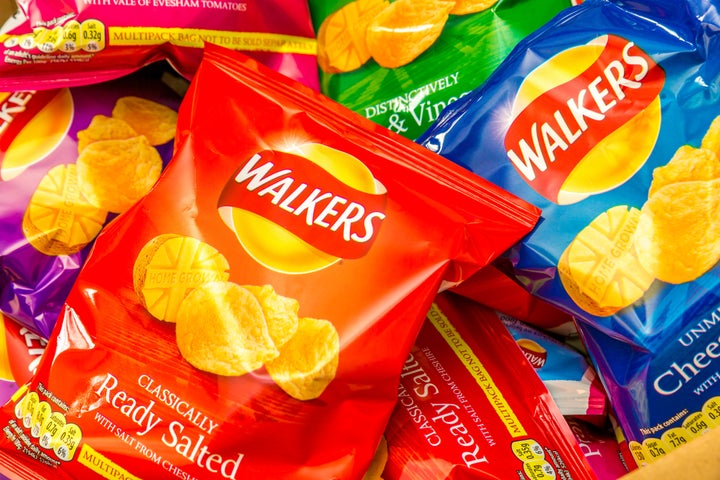It will come as no surprise that we’re a nation of crisp lovers. In fact, crisps and “crisp-style snacks” (translation: cheese puffs and the like) are staples in British households, regularly eaten by 90% of adults, according a recent Mintel report.
But this snacking habit is proving problematic, and not just to our waistlines. Currently, there are no known recyclable packets meaning they’re wreaking havoc on the environment - found washed up on beaches and heading to landfill.
As the environmental impact of single-use plastic continues to dominate headlines, an online petition is calling on crisp giant Walkers to change the materials it uses in order to make packets sustainable.
The petition, which has amassed more than 147,000 signatures, claims crisp packets have been found intact after 33 years. “At todays consumption rate, in 33 years time there will be 200 billion crisp packets either sent to landfill or polluting our oceans,” it says.
[READ MORE: Why is there plastic in my tea bag]

According to Mike Childs, campaigner at Friends of the Earth, most crisp packets use a “cocktail of plastics” with several different layers, including the outer layer, inside layer and sealant. While the inside of most packets looks like shiny foil, this is in fact a metallised plastic film which cannot be recycled.
“While this [mix of materials] ensures the packaging is lightweight, flexible and keeps the contents fresh, the mixture of materials involved makes crisp packets a nightmare of plastic pollution,” he tells HuffPost UK.
HuffPost UK has already reported on the tea bag and chocolate brands to opt for if you’re going plastic-free, but sadly, we can’t make the same recommendations when it come to crisps. Childs says as far as he knows, there are no brands currently offering plastic-free or biodegradable packets.
“The crisp industry should be minimising all material use and waste, and whatever materials they do use must be fully recyclable,” he says. “Companies should also be paying towards the collection of materials they put out into the market. For too long, companies have created waste without taking any responsibility for any cost to the environment, including plastic pollution.”
The good news is change does look like it might be on the horizon. As part of its ‘Project Thin Air’ redesign of packaging last year, Marks & Spencer’s slashed the total plastic in its salt and vinegar and ready salted crisps by 20% by using a thinner film. According to M&S, the changes across the store have led to 75 tonnes of packaging being saved each year.
PepsiCo, which owns Walkers, also told HuffPost UK it is “allocating significant resources” into tackling the issue of waste. “We have committed to 100% recyclable, compostable or biodegradable packaging across our product portfolio by 2025, and are collaborating with leaders in this space to bring the latest packaging advances to our products,” the spokesperson says. “We already have a pilot of compostable bags in one of our markets and are optimistic we will be able to expand its rollout wider in the future.”
Dr Lyndsey Dodds, head of UK marine policy at the World Wide Fund for Nature (WWF), approved of this, telling HuffPost UK: “Banning avoidable single use plastic by 2025 across the UK would go a long way to stemming this flow of plastics into our oceans.”